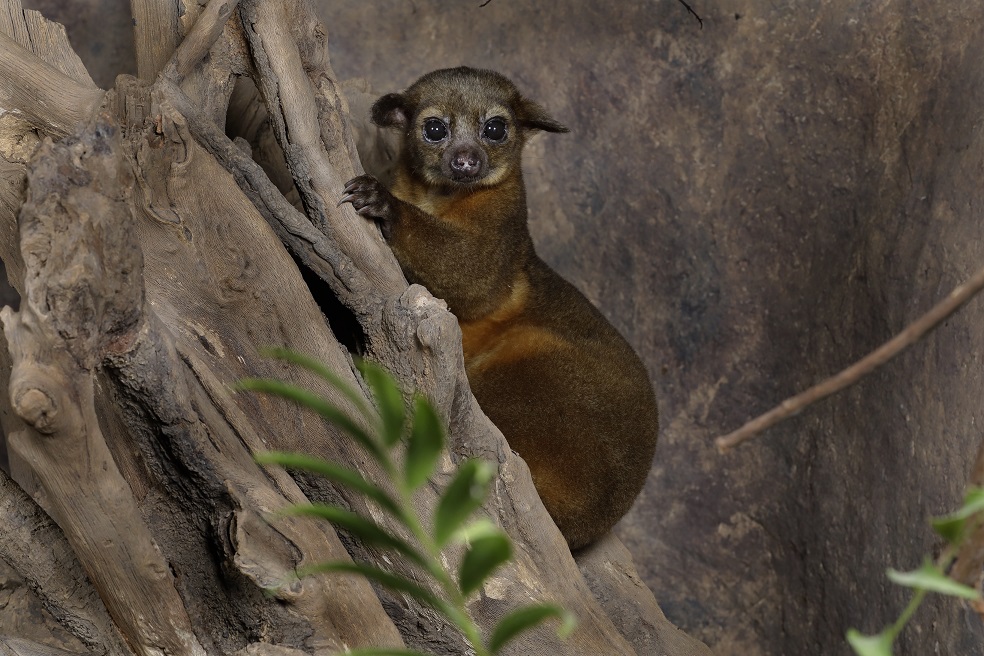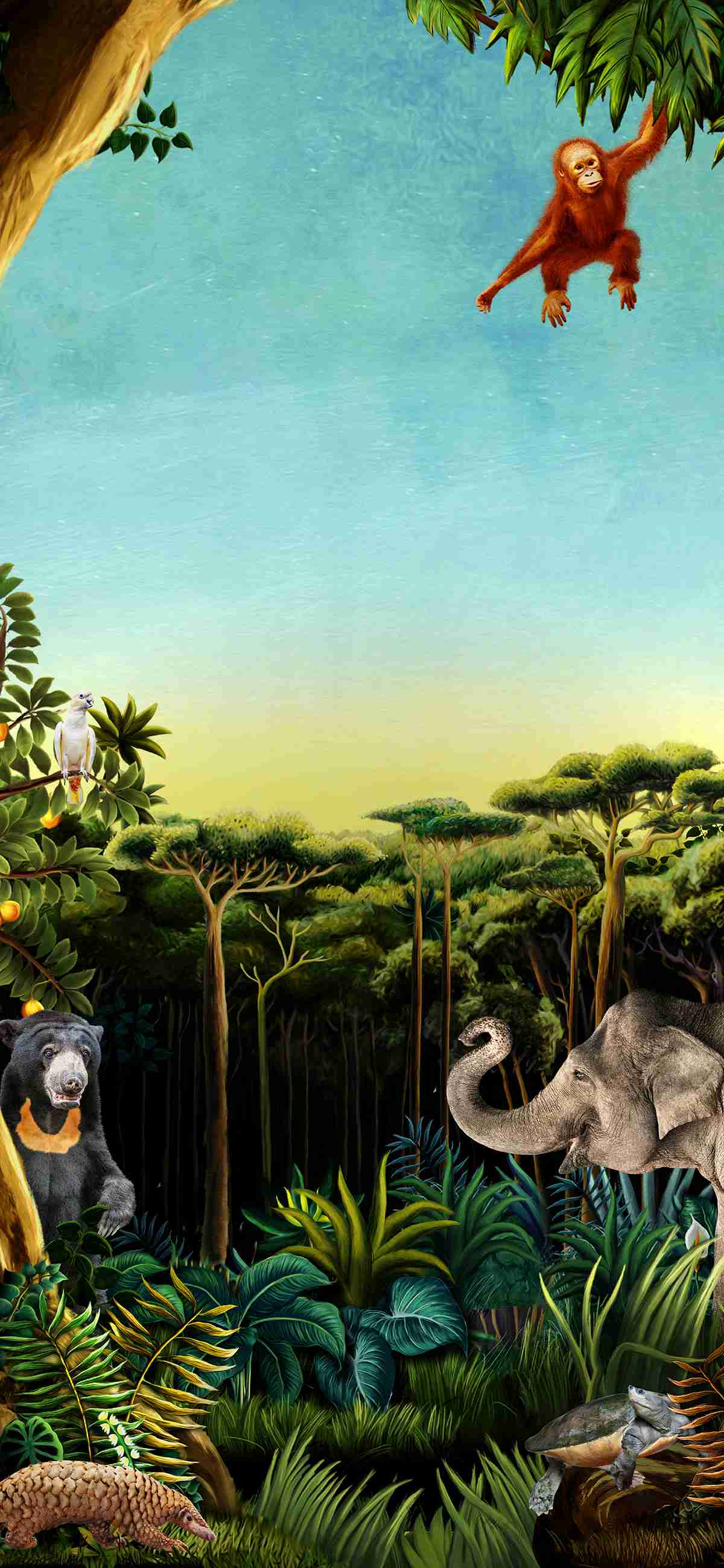First aardvark in Singapore calls Night Safari home
27 NOV 2020Night Safari’s first ever aardvark, Alika, a 5-year-old female, explores her freshly refurbished exhibit furnished with termite mounds and logs to replicate its natural habitat. Guests will be able to spot the curious creature on the East Lodge trail.
PHOTO CREDITS: WILDLIFE RESERVES SINGAPORE

Another new species to Night Safari is a family of spectacled owls and its male offspring. Guests can gaze into their hypnotic stares when the owls make their exhibit debut at the park’s Fishing Cat Trail.
PHOTO CREDITS: WILDLIFE RESERVES SINGAPORE
Native to Africa, the aardvark’s unique name comes from South Africa's Afrikaans language and translates to “earth pig”. With its elongated snout and powerful claws, the nocturnal insectivore is specially adapted to forage and dig through the ground for termites. Night Safari’s 5-year-old female aardvark arrived from Japan’s Higashiyama Zoo in October 2020 as part of an animal exchange programme. Her caretakers have named her Alika, which means “the most beautiful” in Afrikaans. A special diet has been formulated by Wildlife Reserves Singapore’s in-house wildlife nutritionist based on wild diets which have unique requirements. Keepers are helping the animal to transition into a special blend of insectivore pellets, ant’s eggs, chicken eggs, omega-3 supplements, and even sand to match the nutritional composition of its diet in the wild. After a month-long quarantine and being given a clean bill of health by the veterinarians, she makes her debut on Night Safari’s East Lodge Trail today. The exhibit comes furnished with artificial termite mounds and logs to replicate her natural habitat and for keepers to hide food in the crevices to encourage natural foraging behaviour.
A trio of spectacled owls will also swoop into their newly refurbished aviary on the Fishing Cat Trail. Native to Central and South America, the spectacled owl is characterised by its distinct white facial markings or “spectacles” giving them their mesmerising stares. Consisting of parents and their male offspring, the family came from Basel Zoo in Switzerland.
Less than a year after their introduction to Night Safari, Southern three-banded armadillo couple Rocha and Rolar welcomed a pup on 5 September 2020. This marks the park’s first armadillo birth. Weighing just 374 grams at birth, the 2-month-old has since almost doubled its weight, exceeding 700 grams. The Southern three-banded armadillo is listed as near threatened under IUCN’s Red List of Endangered Species from habitat loss and poaching for its meat and due to the illegal pet trade. The pairing of the parents, Rocha and Rolar, was endorsed under the European Studbooks (ESB) by the European Association of Zoos and Aquariums (EAZA) and the progeny will go on to boost the genetic diversity of the species under human care. The little ball of joy joins its parents in their exhibit on the Fishing Cat Trail.
High up on the branches within the same exhibit, the armadillo family and guests are greeted with a familiar face, the kinkajou, an arboreal mammal related to racoons. Previously on exhibit in the old Critters Longhouse in Singapore Zoo, the kinkajou once again makes its public appearance, cohabiting with the armadillos as both species are native to South America. Other familiar South American faces include the Giant anteater and capybara who have made their way from River Safari to their new home in Night Safari’s Fishing Cat Trail where guests will see them in a new light. The two gentle giants will be housed together in a mixed species exhibit for the first time. Mixed species exhibits help to facilitate positive cross-species interactions, which makes for enrichment to keep the animals mentally and physically stimulated. It also enhances guest experiences and provides educational value where guests can learn about ecosystems in the wild where many species co-exist in a single habitat.
With these exciting new animals and exhibits, Night Safari launched its first digital trail, Wild About Twilight, to guide guests along the trails using the Breadcrumbs app which will enhance the night walk experience amidst the rainforest setting. Learn fun facts, partake in quizzes, and take selfies with augmented reality versions of the animals to earn experience points and unlock rewards like exclusive enamel pins. Make it to the top of the leaderboards to secure complimentary Safari Adventure Tours or park memberships.
Alika the aardvark snoozing in her bed of hay during her month-long quarantine. As a nocturnal mammal, she spends most of the day sleeping and wakes up in the evening or night.
PHOTO CREDITS: WILDLIFE RESERVES SINGAPORE

Night Safari’s first armadillo pup (left) and its mother, Rolar (right). The pup was born on 5 September 2020, a boost to the genetic diversity of the near threatened species under human care.
PHOTO CREDITS: WILDLIFE RESERVES SINGAPORE

The newly introduced kinkajou shares the exhibit with the armadillos in Night Safari’s Fishing Cat Trail. As an arboreal mammal, the kinkajou spends most of its time high up in the branches while the armadillos scurry on the ground in the mixed species exhibit.
PHOTO CREDITS: WILDLIFE RESERVES SINGAPORE

